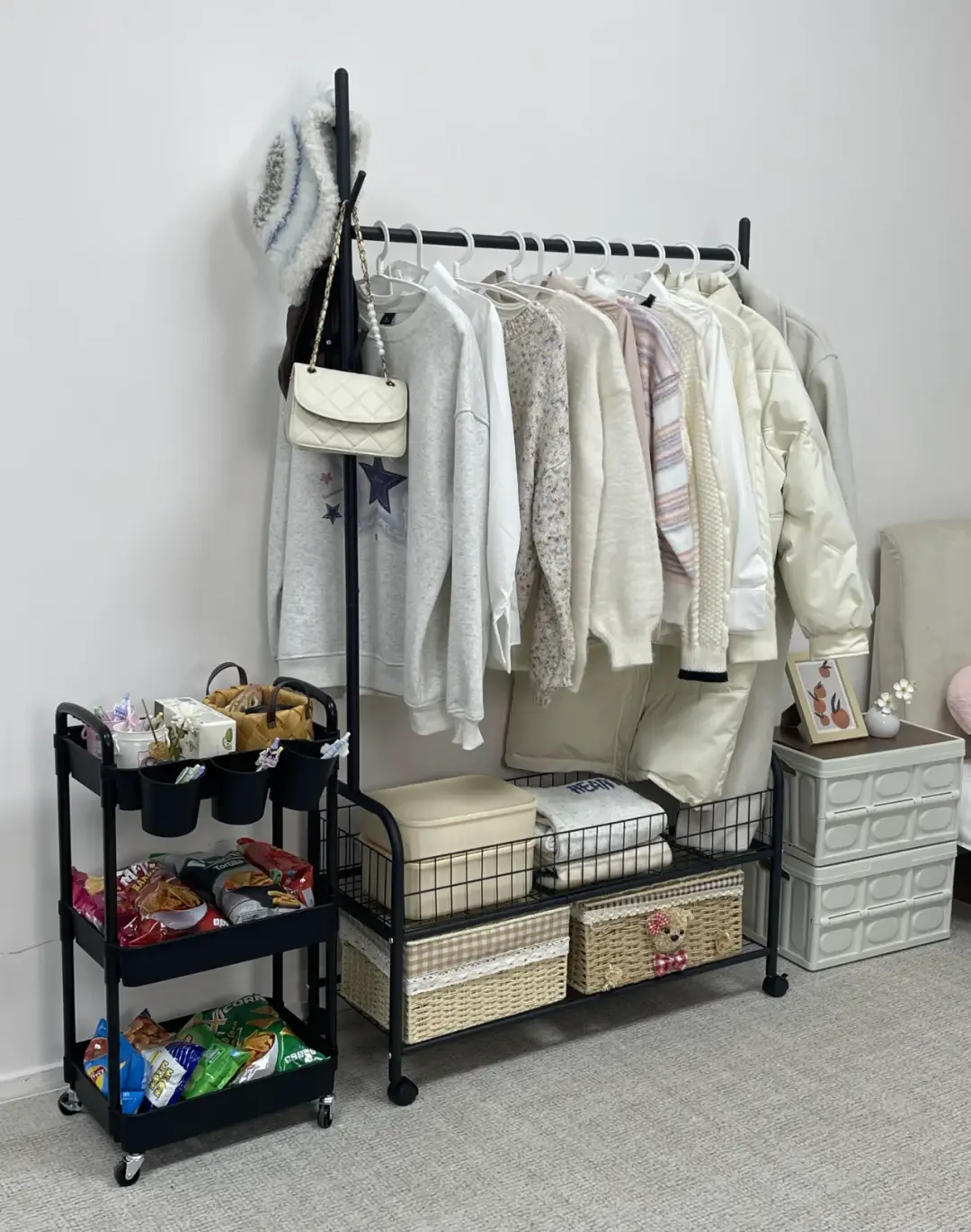Where do you put the clothes you take off when you get home?
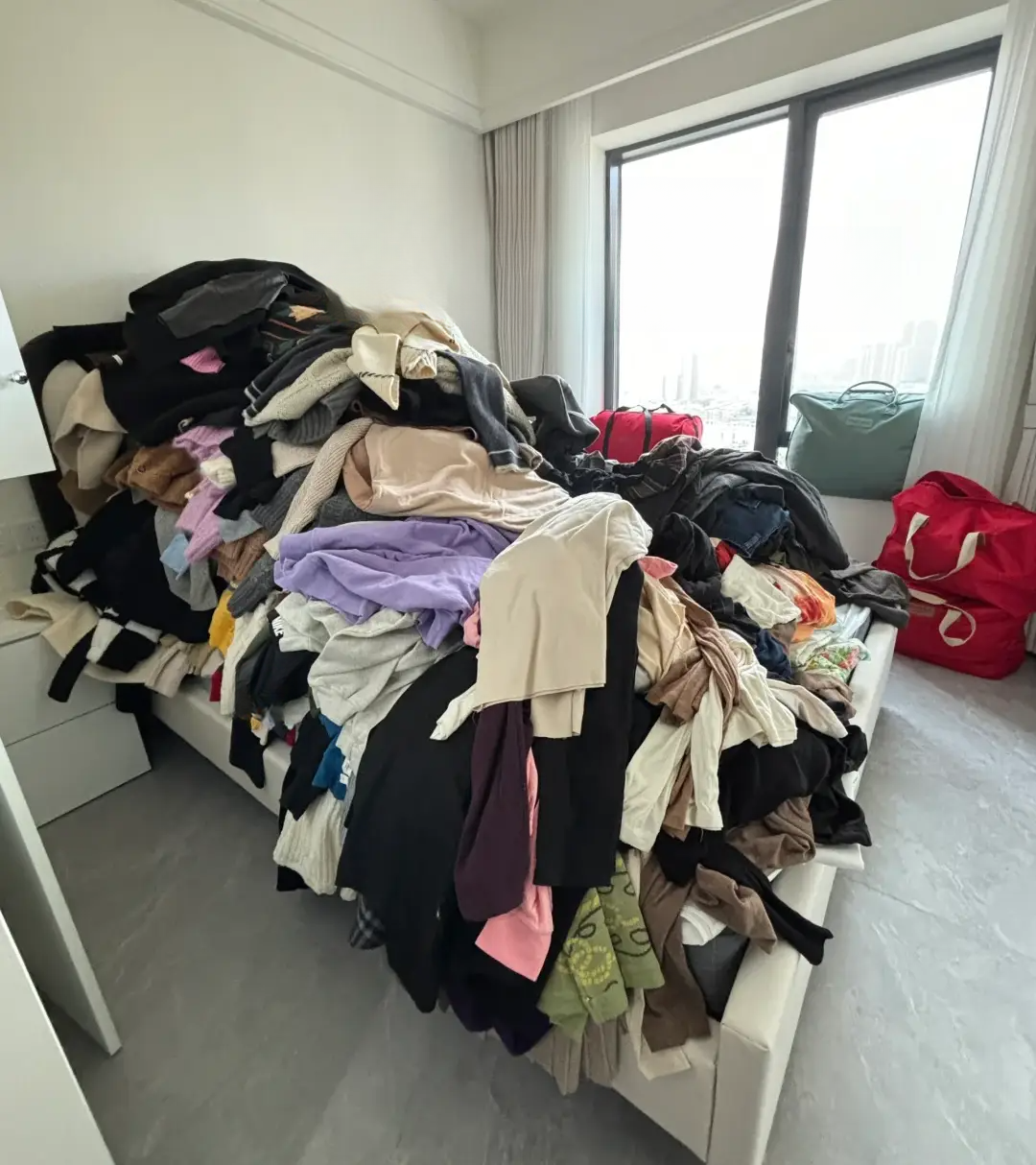
"When you get home from get off work, you throw your coat on the sofa; you pile up your used but clean sweaters on the back of the chair; you lay your shirts for tomorrow flat on the washing machine... This familiar messy scene is happening in 65% of households!
In fact, these "mountains of clothes" that drive you crazy can be solved during decoration. As long as you consider the details of life carefully, your home will be clean and tidy and more comfortable to live in. Otherwise, even the biggest house will be "swallowed" by clutter.
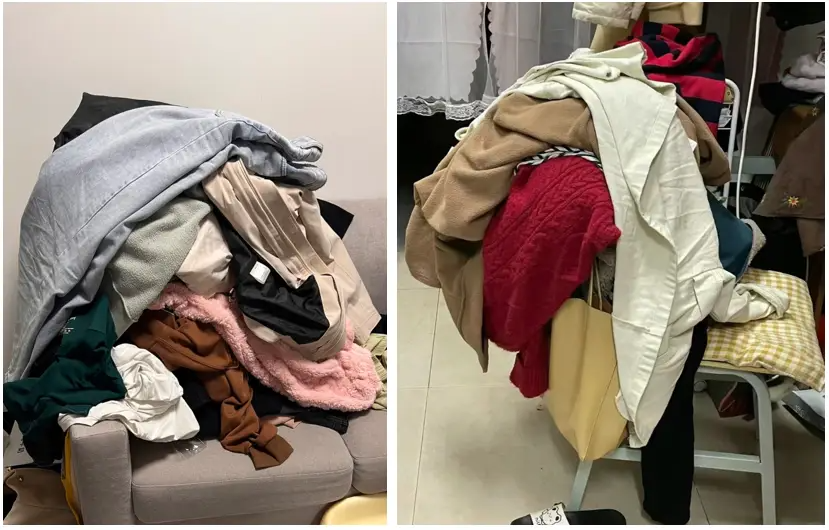
So, where is the best place to put the clothes you take off when you get home? Let's learn from the following people and design a "secondary clean clothes area", which is indeed much tidier.
Which spaces are suitable for designing secondary clean clothing areas?
1. The best choice for the entrance
As the first space for people to enter and exit, it is most appropriate to place the clean clothes area in the entrance hall. When you return home, you can directly put your clothes and bags in this area, which can effectively isolate the dust and bacteria brought back from the outdoors.
① If there is a cloakroom or cabinet in the entrance hall, you can leave an open area specifically and plan out long-clothes and short-clothes areas according to daily clothes. This is convenient and easy to use, and also facilitates ventilation.
Like the netizen @海洋菇 in the picture below, his custom-made entrance cabinet has reserved open compartments, and combines the entrance clothes hanging area with a shoe-changing bench , killing two birds with one stone.

The clothes hanging area can be hidden or open. The former can make the entrance area more tidy, while the latter is more convenient for daily taking. Just choose according to your situation at home.
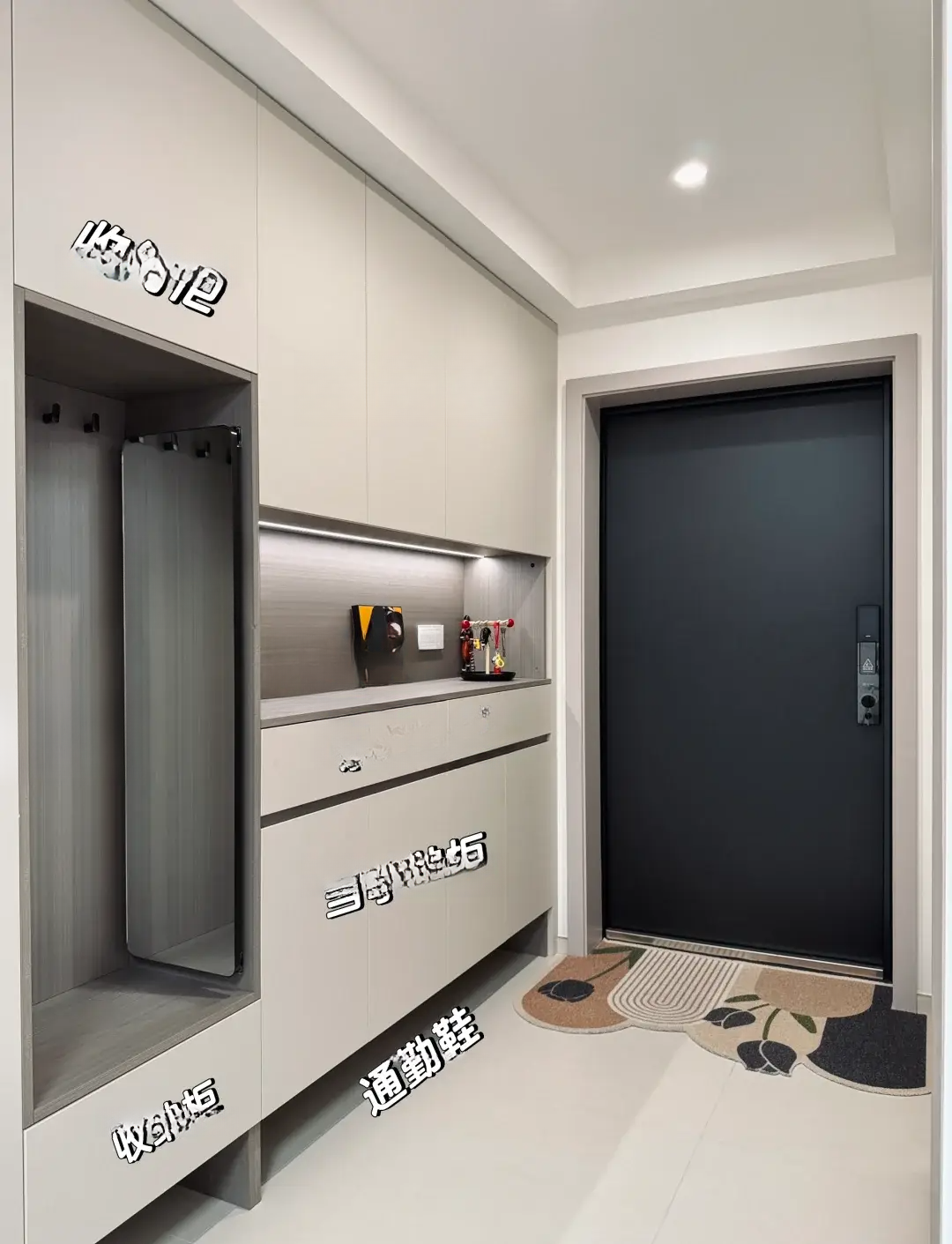
In addition, if space permits, the washbasin can be set up in conjunction with the secondary laundry area. You can go home - change shoes - wash hands - change clothes , etc. The movement lines are smooth and all in one go, and after the functions are further subdivided, the quality of life will be greatly improved.
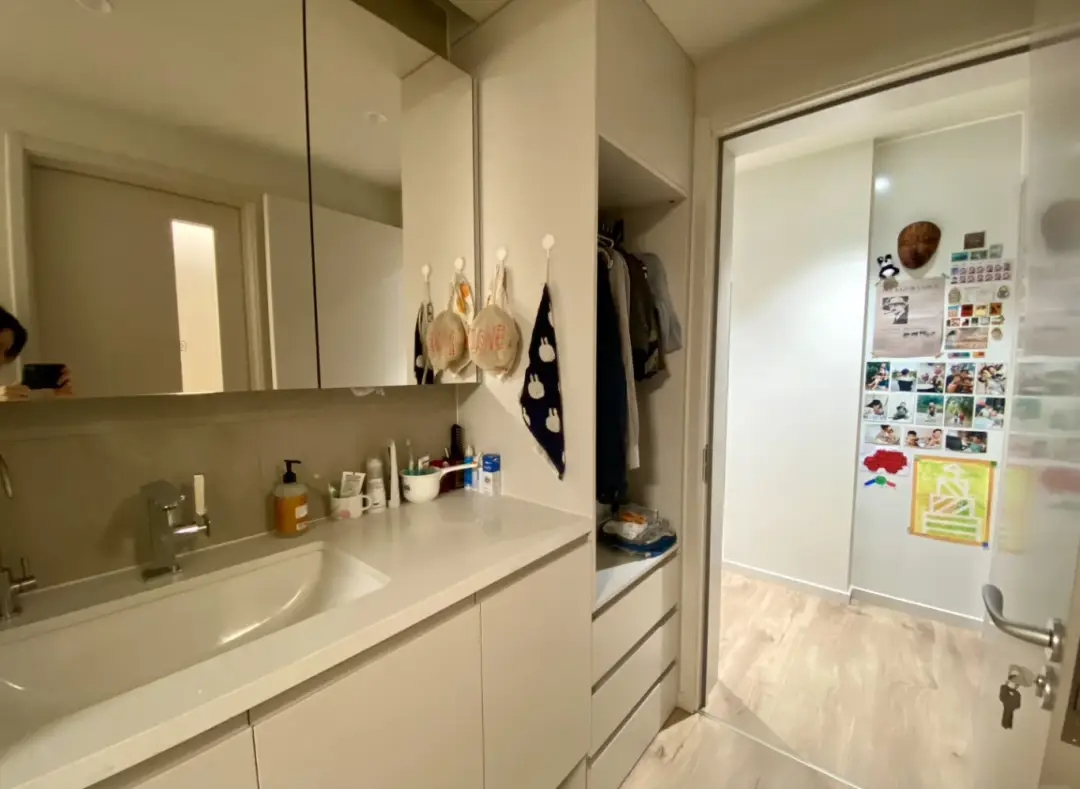
② There is no entrance cabinet, and there is a wall as soon as you enter the door . You can use tools such as clothes hooks and perforated boards to create a secondary clean clothing area to store frequently worn clothes. It not only has strong storage capacity, but also has a certain decorative effect.
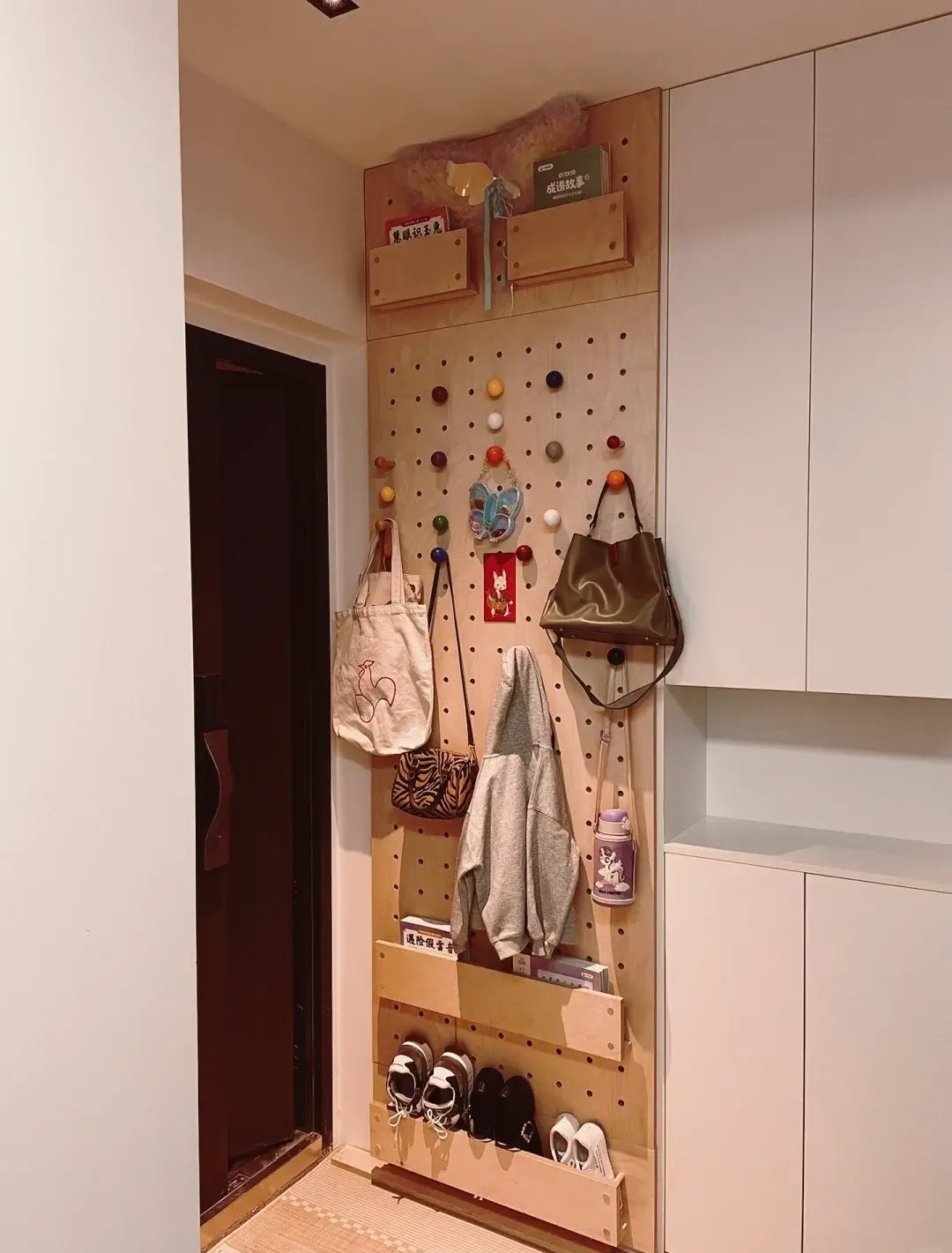
③If space is limited and there is no independent cloakroom and entrance cabinet , you can "borrow" a secondary clean clothing area from the corridor without affecting the normal passage of the corridor and within the range allowed by the width of the corridor .
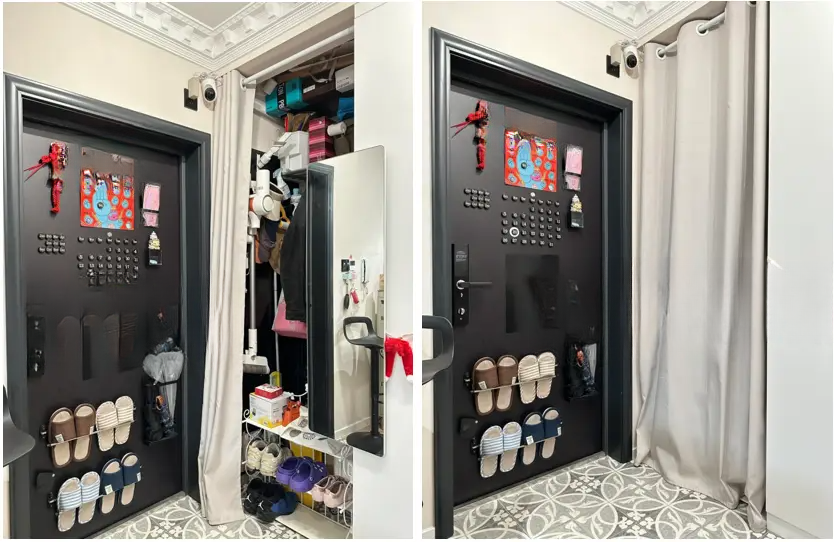
2. The bedroom is the second choice
In order to avoid "disturbing" the clean clothes in the closet, before customizing the closet, plan an area to solve the problem of storing the second-hand clean clothes, or use the corners of the bedroom to squeeze out a temporary storage area. The specific plan is as follows:
①Wardrobe front open area
If the bedroom bedside cabinet is large, it is very suitable to set up an open hanging area. Take the design in the following figure as an example. The room depth is 3.6 meters, the total length of the wardrobe is 4.2 meters, and the width of the aisle between the cabinet and the bedside is 66 cm. This layout not only makes use of the space, but also facilitates daily use.
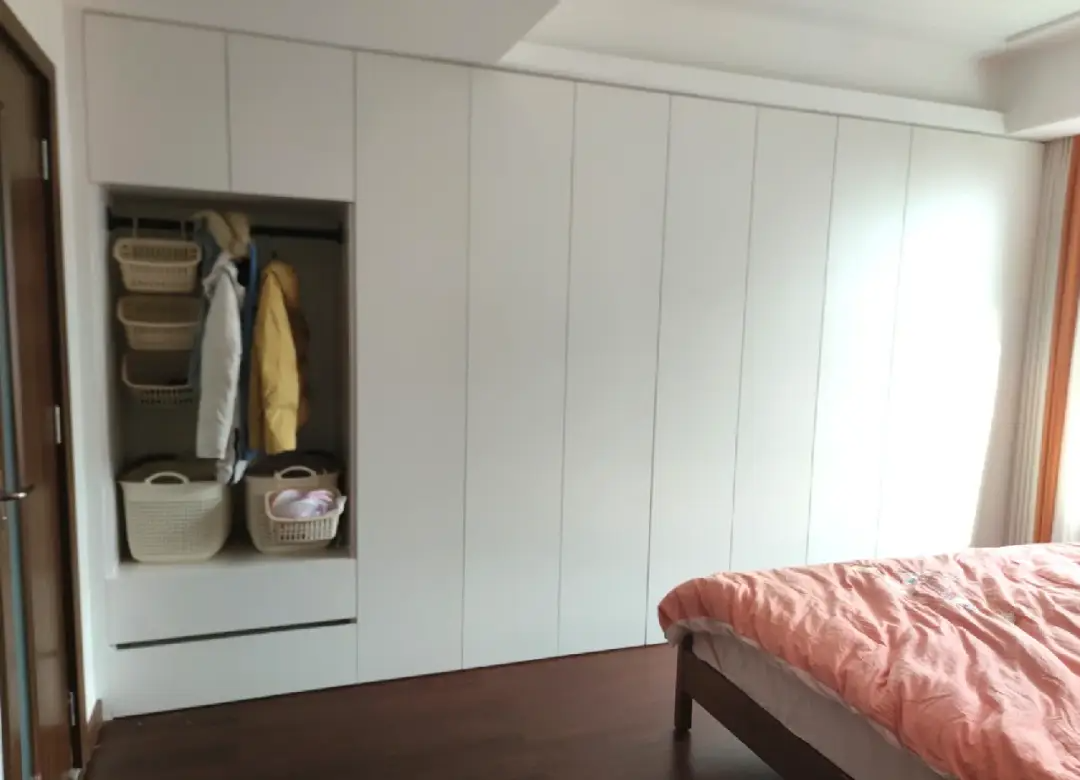
②Wardrobe side area
If you are worried that making open compartments on the front will make it look messy or destroy the unity of the entire cabinet, you can use the side of the wardrobe to make an overnight hanging area.
Like the netizen @小绘画 in the picture below , she didn't want to destroy the front wardrobe, but because the air return vent of the air conditioner must be left empty, she simply used the side of the wardrobe to store overnight clothes. Although the space is limited, the utilization rate is also very high. If you are afraid of dust, the bottom pull-out basket can be made into a closed drawer.
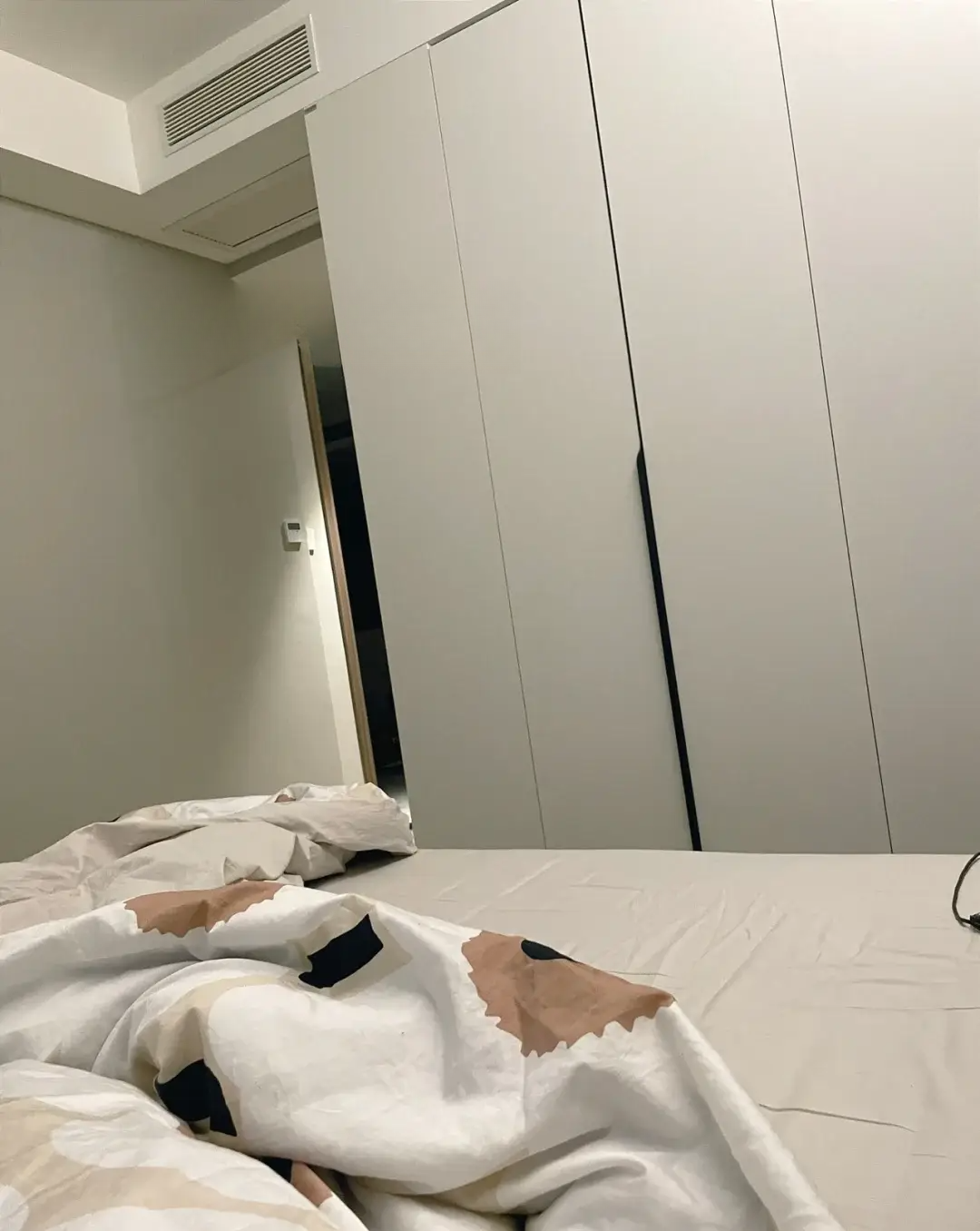
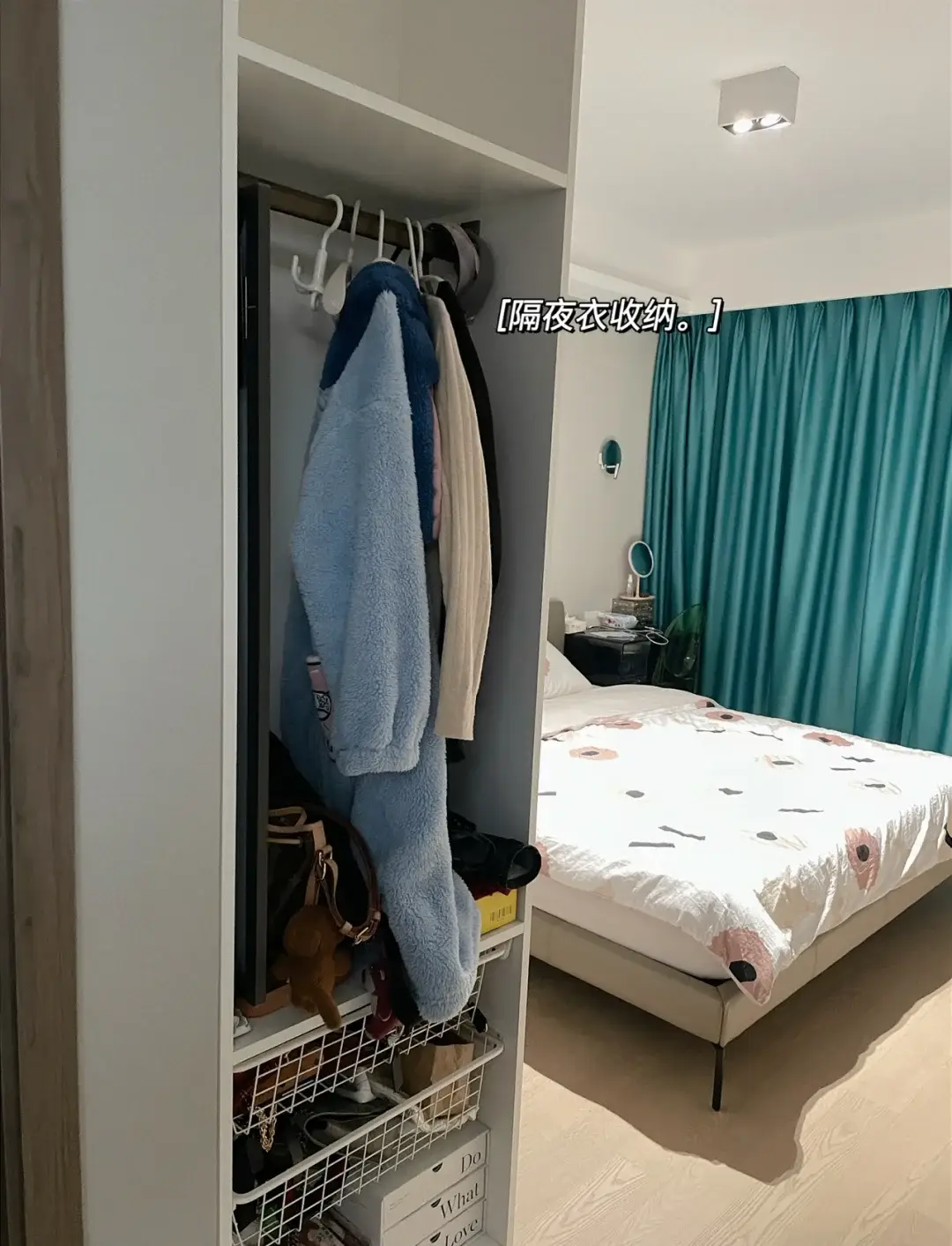
③ Make a clean clothes area on the wall or in the corner
In addition to the large wardrobe, you can also use other areas of the bedroom to design a secondary clean clothing area, such as using idle walls or corners.
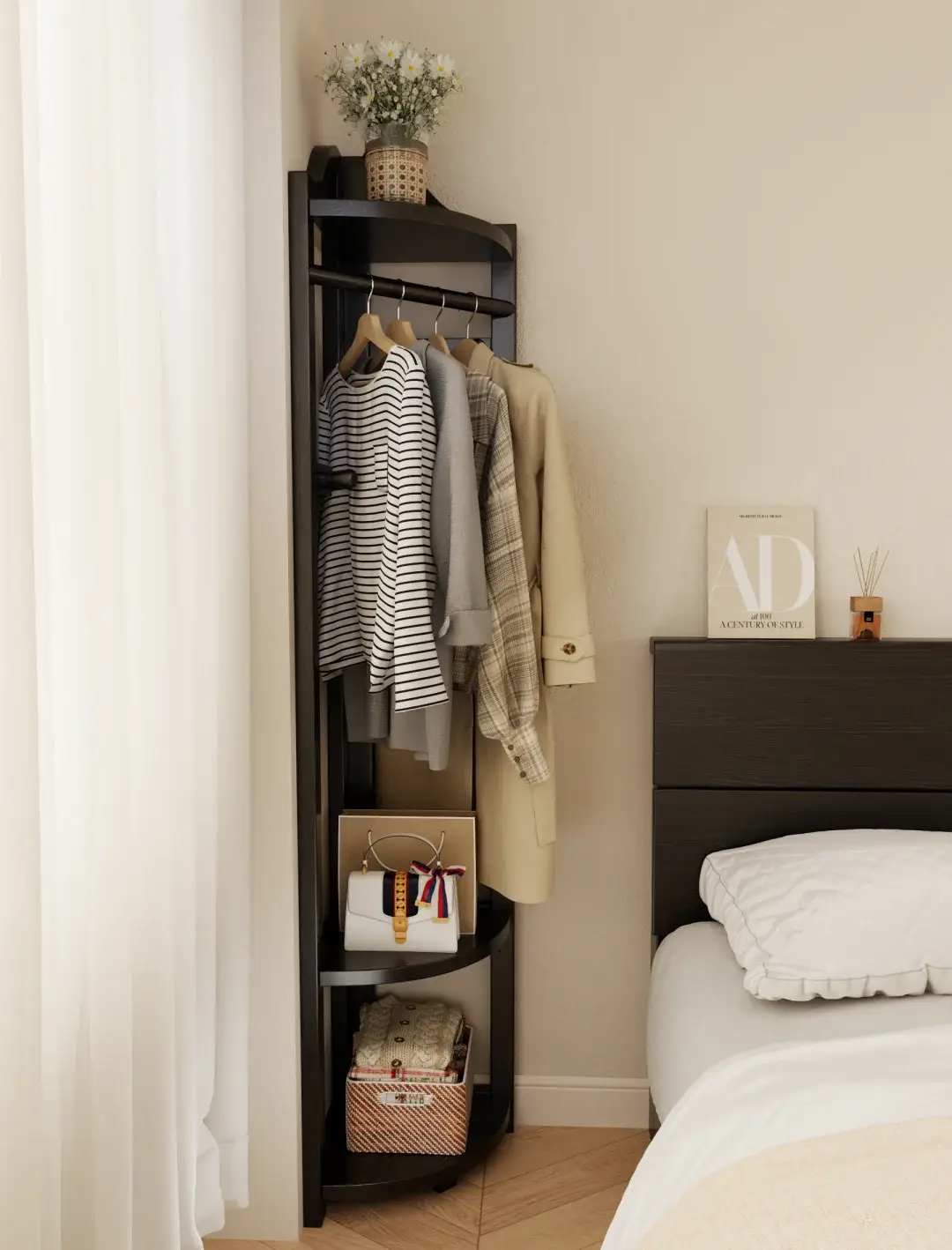
④Storage area behind the door
Use the area behind the door as a hanging area to store ties, scarves, and belts, instantly expanding the storage space five times.
Like the door wall in the picture below, it is originally concave, and a few "folding hooks" are installed directly, which is just suitable for hanging clothes. However, this storage method can only be installed on the ground. Otherwise, when the door is opened, it will be blocked by clothes.
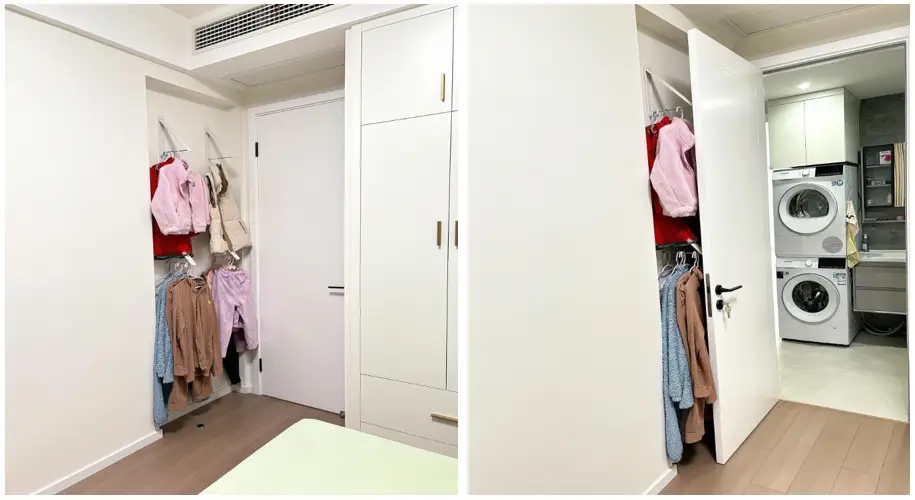
Of course, if you want the least hassle, you can go with a hook + plastic chain combination like the one in the picture below and just hang it on the door.
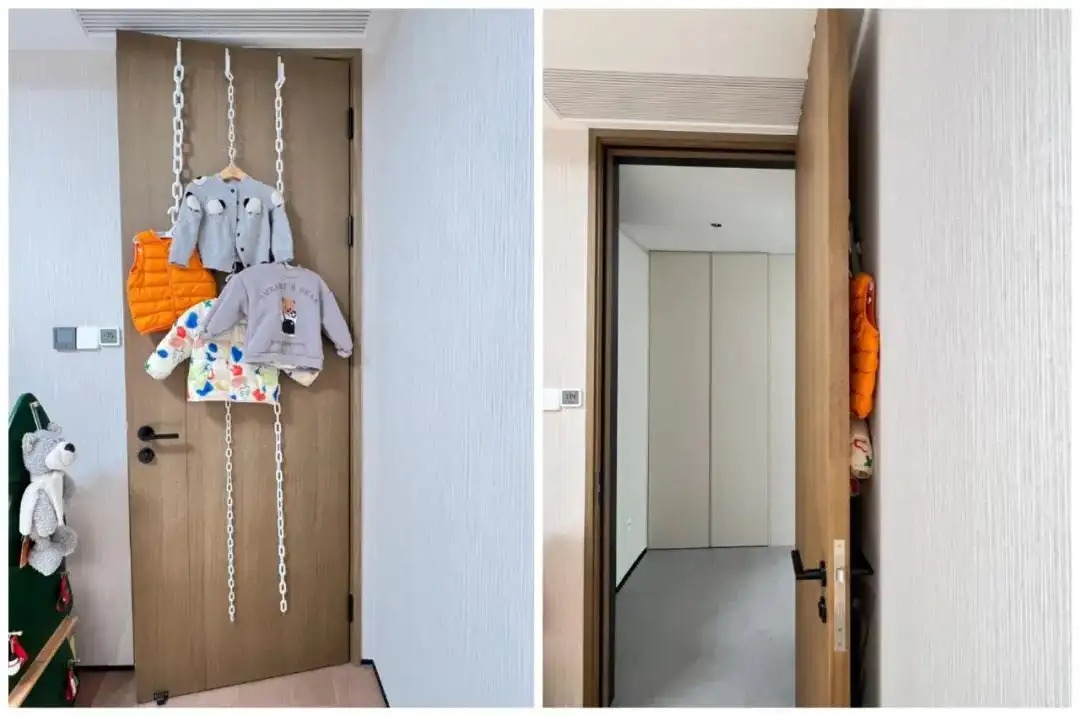
⑤ Floor-standing coat rack
Considering the space and size of the bedroom, you can buy a set of ready-made floor-standing clothes racks. The position is very flexible. It can be placed at the end of the bed and combined with the chest of drawers, which is both beautiful and has strong storage capacity. It can also be placed on the side of the bed and combined with the bedside table to meet the storage needs of different functions.
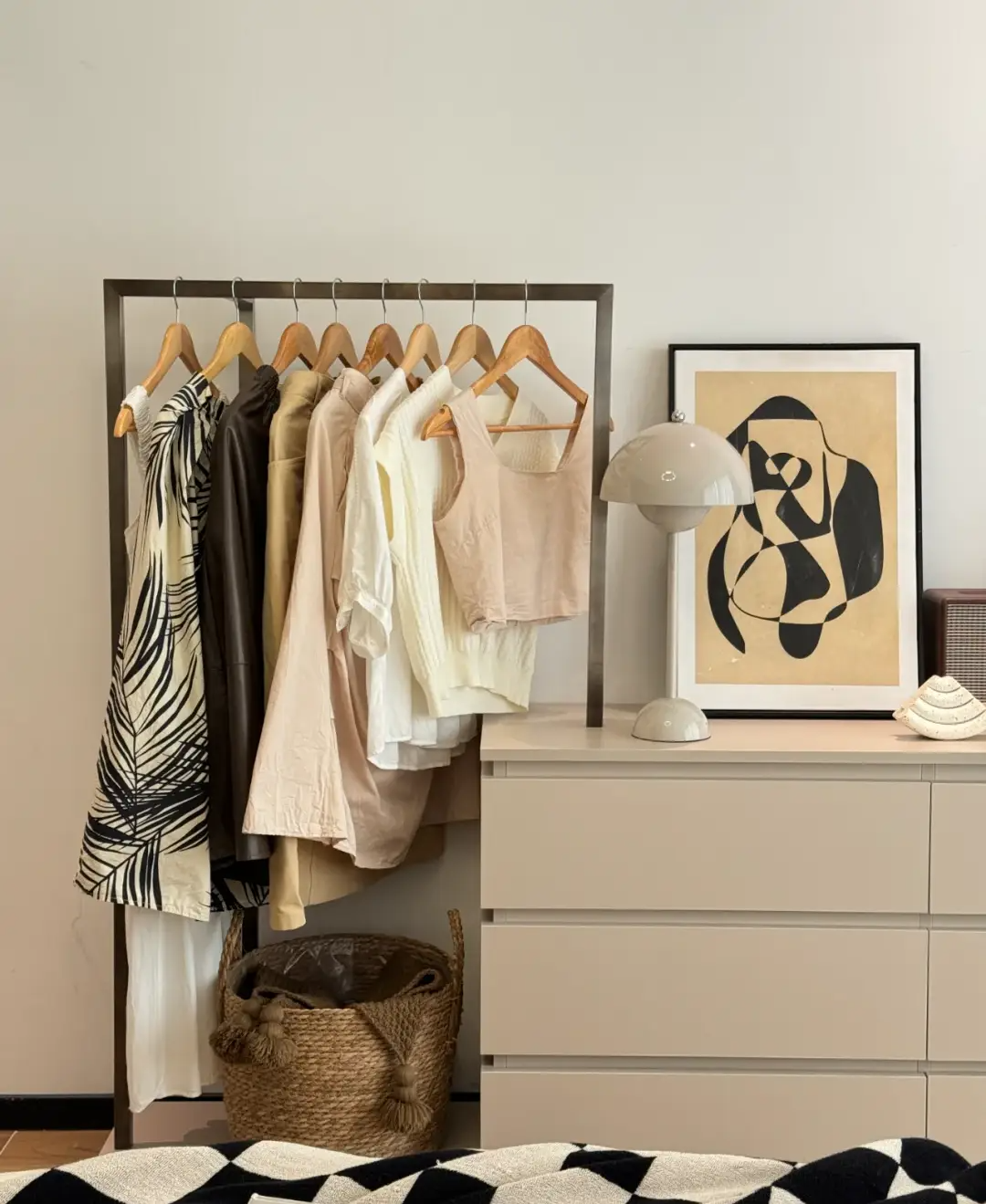
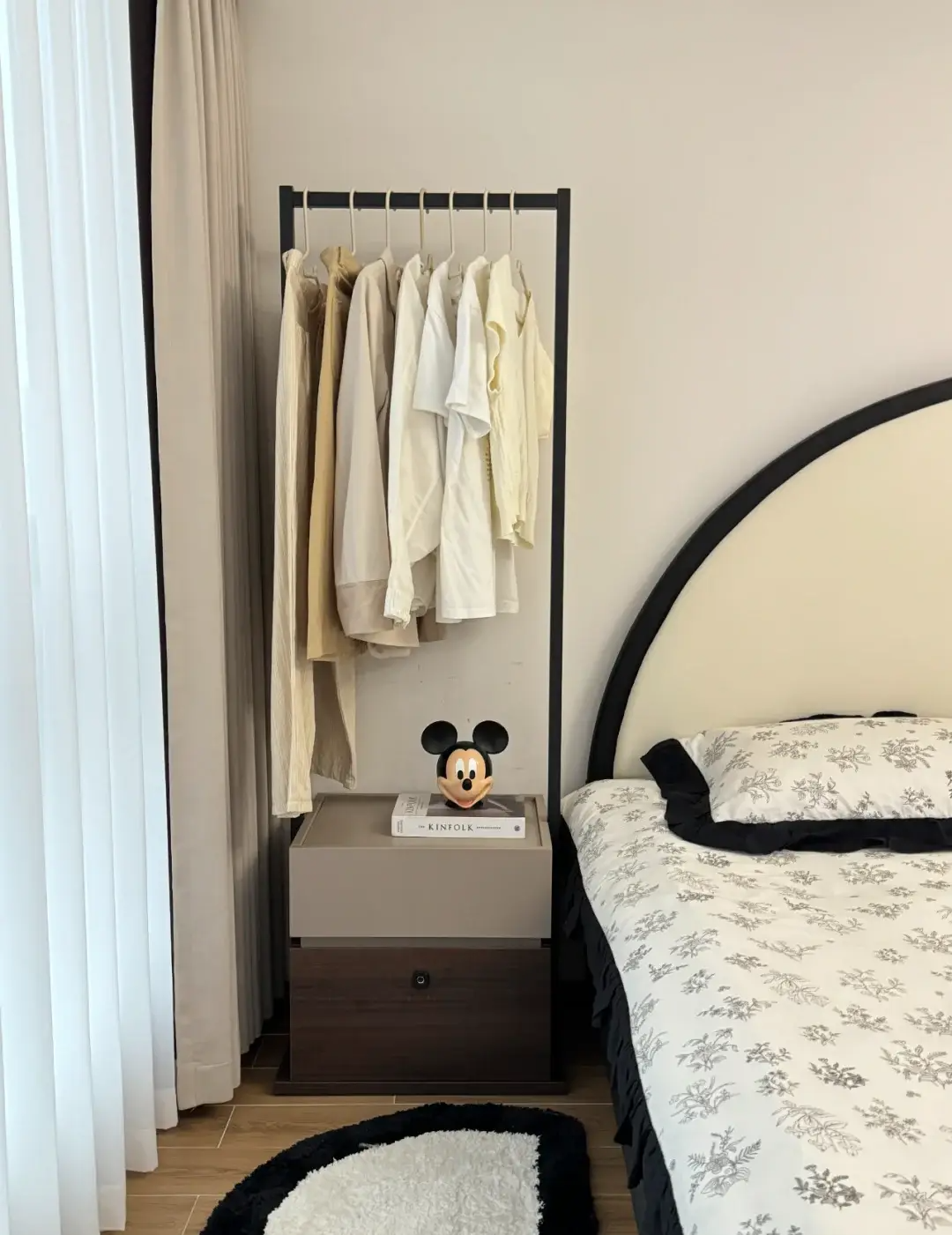
⑥Bay window storage area
If there is a bay window in the bedroom, you can use it to design a clothes hanging area. For example, you can install a clothes hanging rod directly on the top of the bay window, or install an invisible clothesline on one side of the bay window.
You can even place a ready-made floor-standing clothes hanger on the side of the bay window and cover it with curtains. This will not only avoid clutter but also facilitate ventilation.
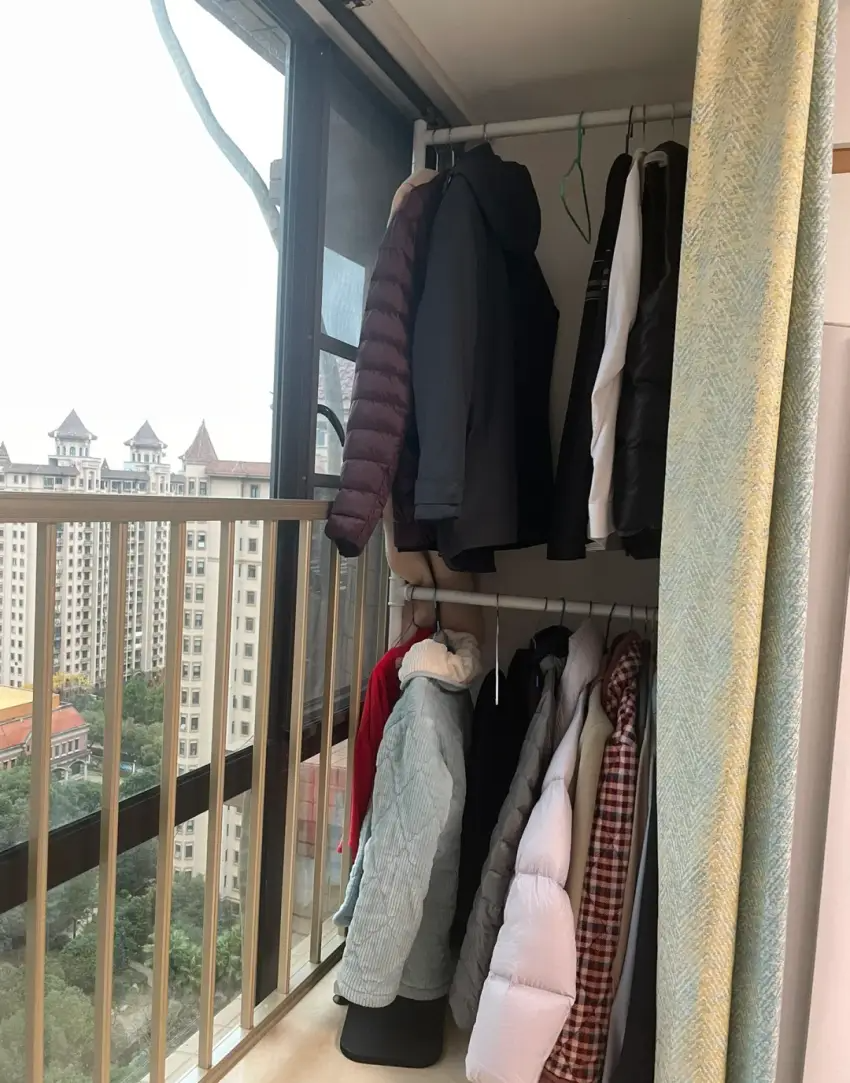
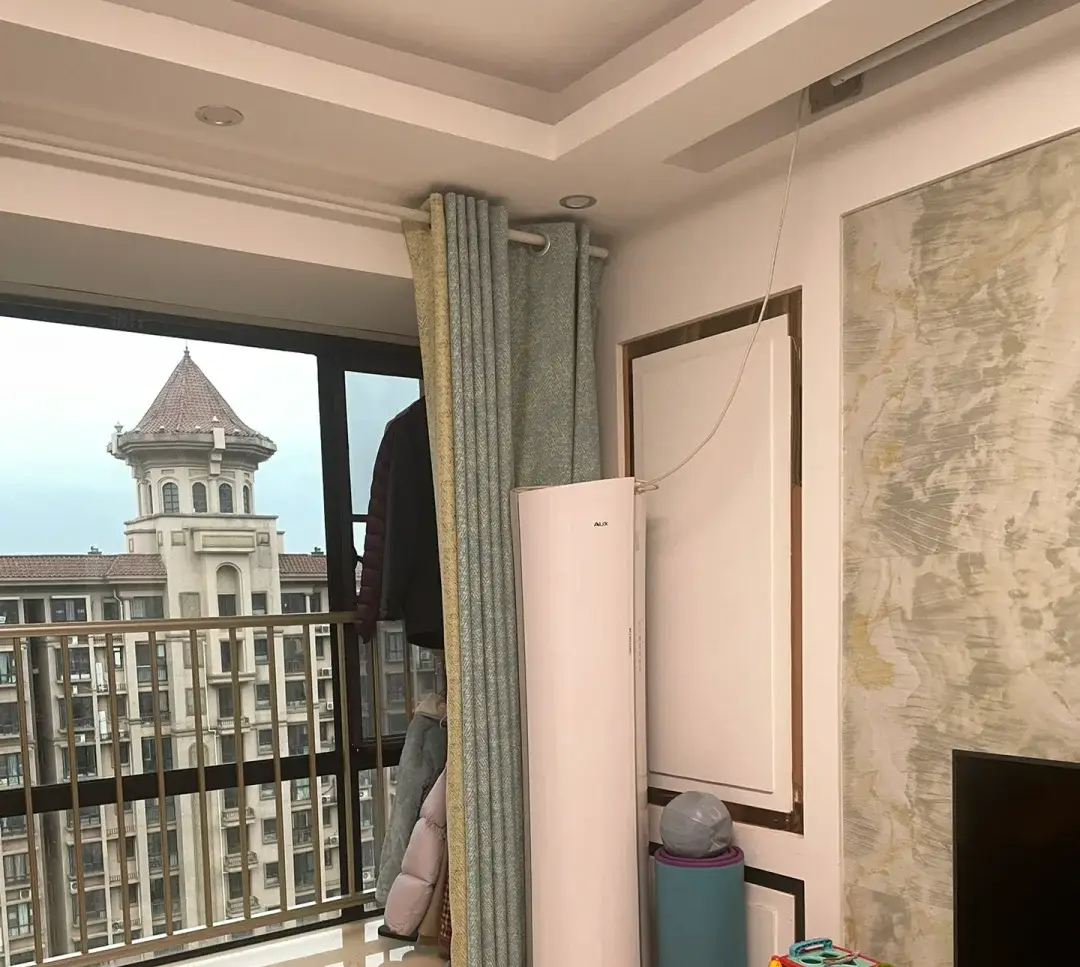
3. The living room is an alternative
As long as there is space in the living room to make a cabinet, you can also put the clothes you take off in it for storage.
For example, in the picture below, the secondary laundry area in the living room is designed by utilizing part of the space of the sideboard. The cabinet body is 36cm deep and 32cm deep, which can hold more than a dozen coats and pants.
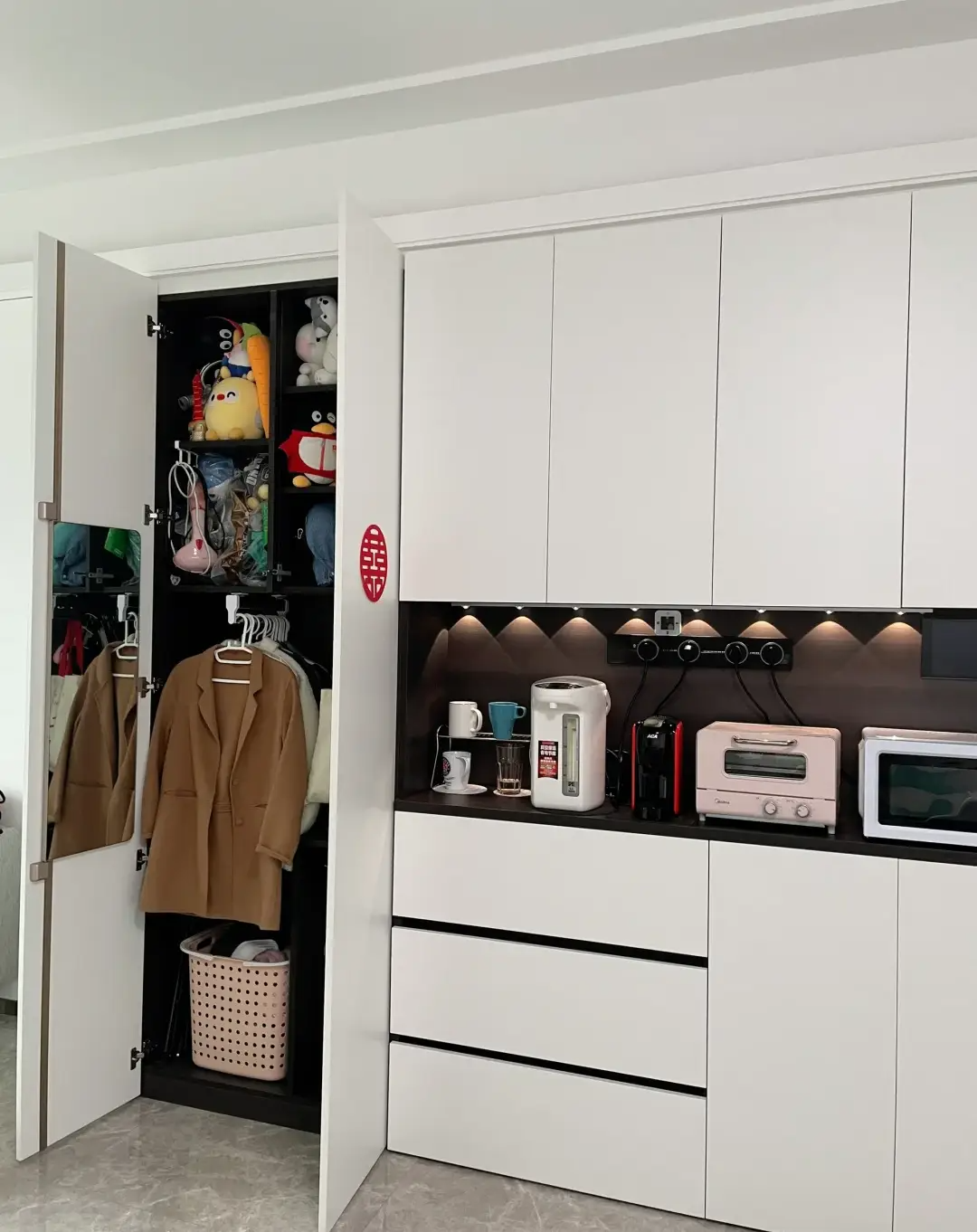
Another example is the clothing hanging area in a small apartment shown below. It is designed with a wall cabinet that covers the entire TV wall. Although it is not large, it provides no problem with storage.
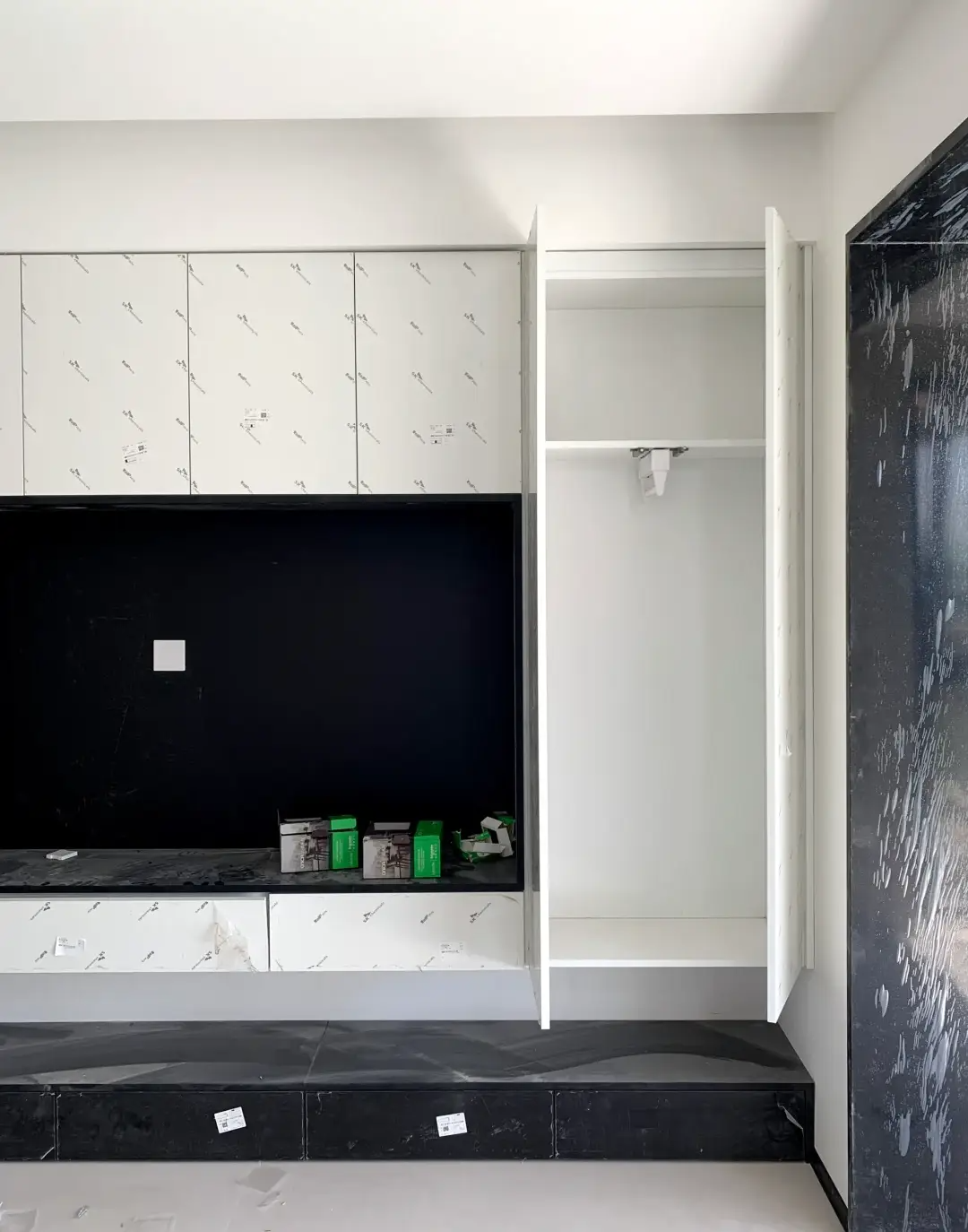
4. Laundry rooms are also available.
If you have a separate laundry room at home, you can plan the secondary clean clothes area here, which will save you the chore of sorting dirty clothes and improve laundry efficiency without affecting the cleanliness of other spaces.
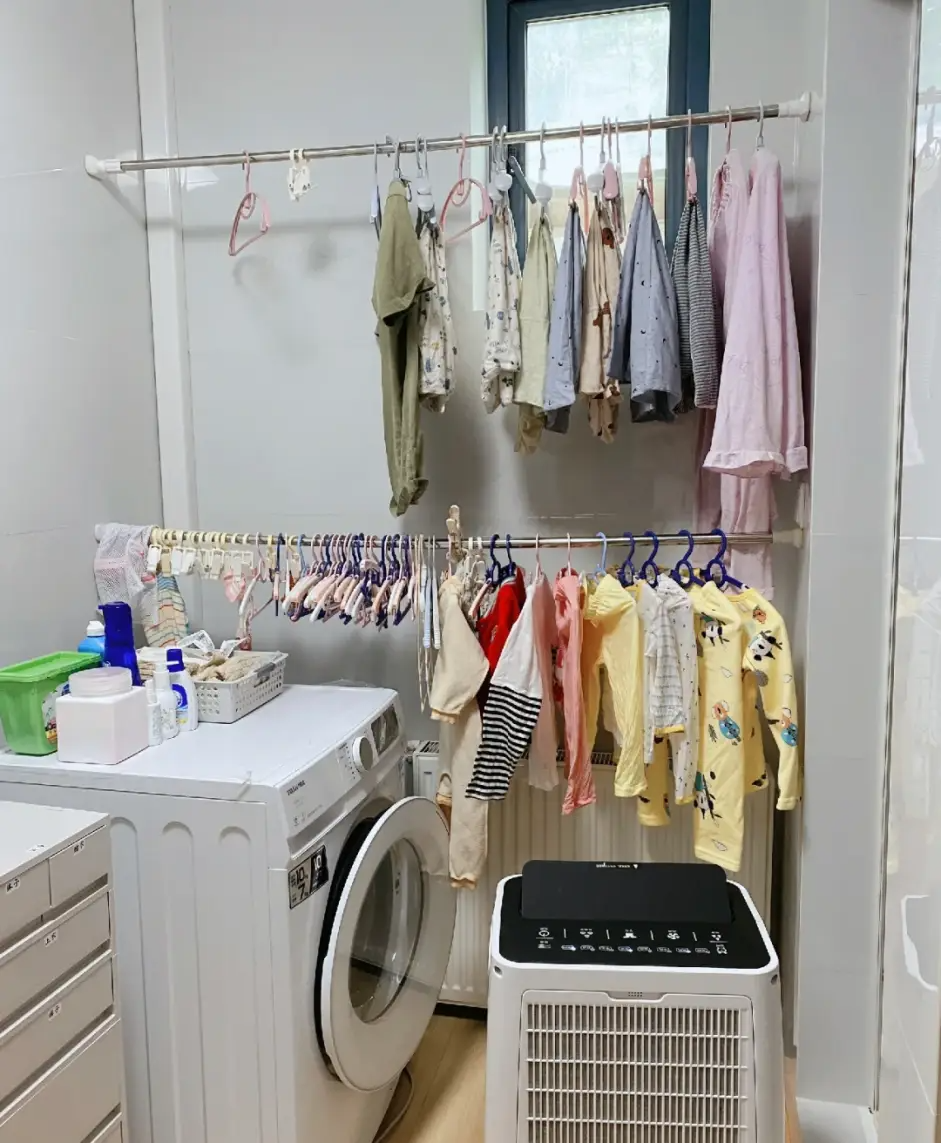
In addition to storing daily necessities, laundry detergent, washing powder, etc. in the laundry room at home, if there is ample space, you can directly leave a countertop in the base cabinet to use as an ironing area or folding area. Remember to reserve a power socket next to it to save time and worry!
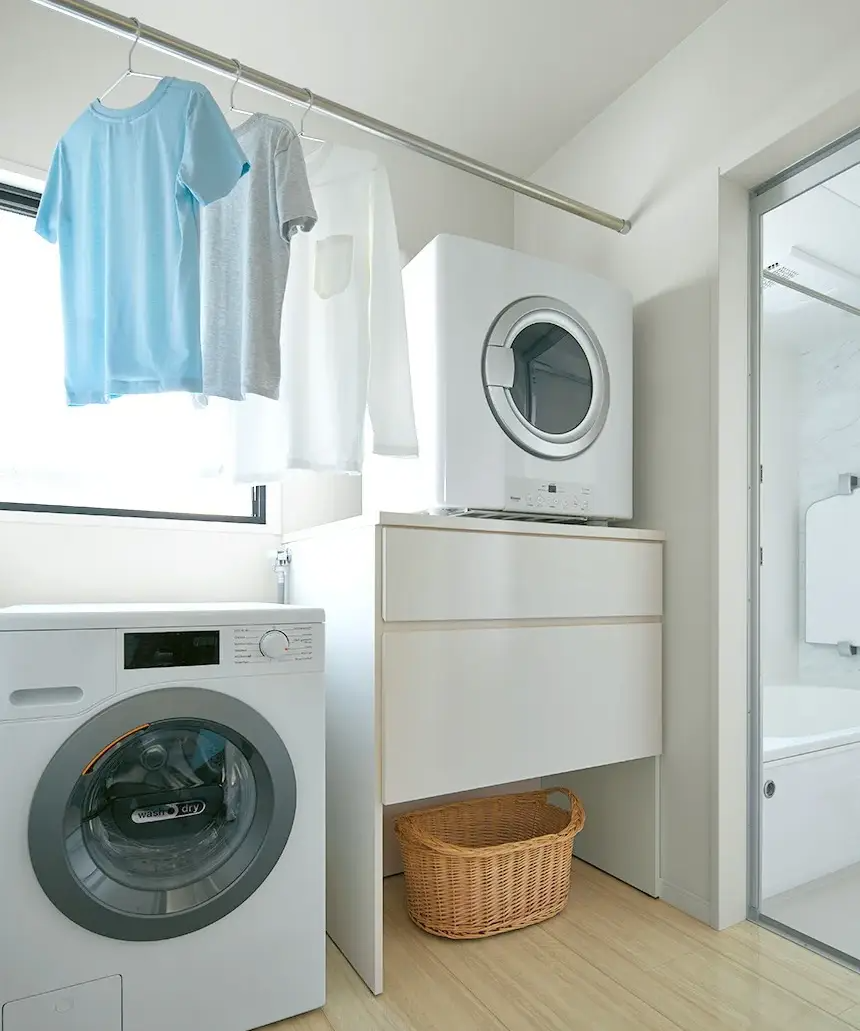
.02
Considerations for designing the secondary clean area
1. Reasonable planning of location:
Although the entrance and bedroom are more suitable for cleaning areas in life lines or personal habits, it does not mean that these two areas are fixed. They can be determined according to personal preferences and space. For example, the area behind the door and the corridor.
2. Choose suitable storage tools: If there is no independent space, you can use tools to create a suitable secondary clean clothing area in a limited area.
Tool ①: perforated board or clothes hook
If the space is small, you can use perforated boards or hooks to hang clothes in the entrance area. This not only fits the daily clothing-changing route, but also improves the cleanliness of the home.
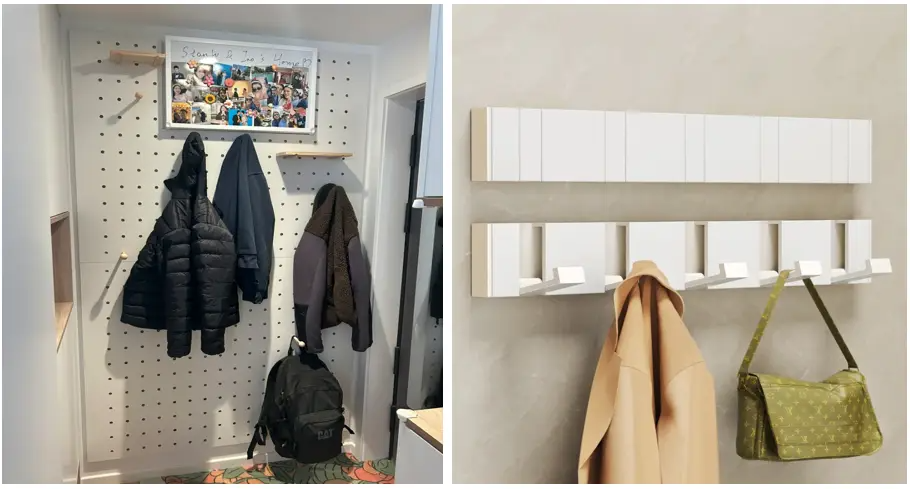
Tool ②: Removable clothes hanger
The movable clothes hanger mainly adopts a height-increasing design for storage, which saves space and has strong storage capacity. The floor-standing clothes hanger can not only utilize the corner space but also can be replaced as needed, making storage more flexible.
